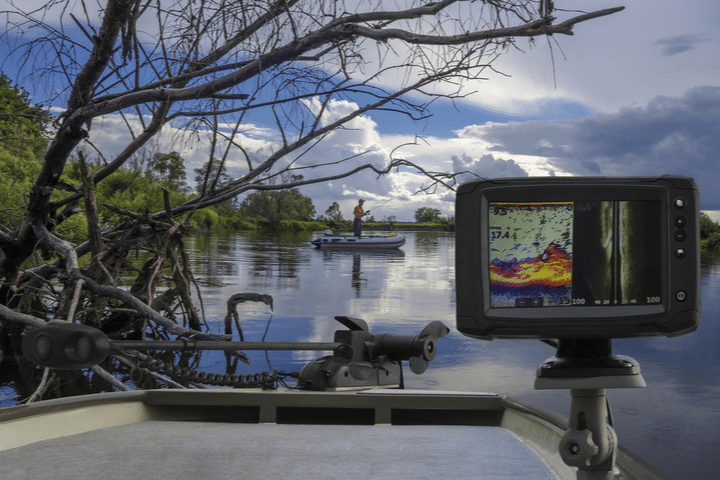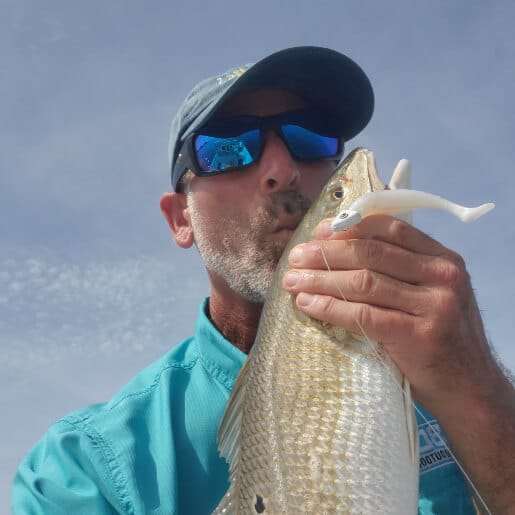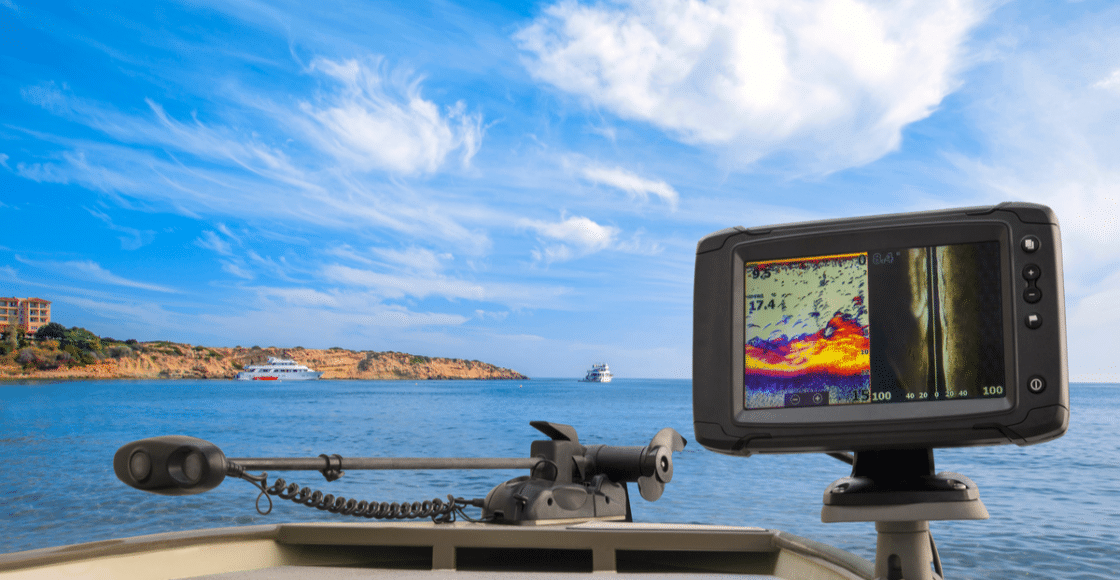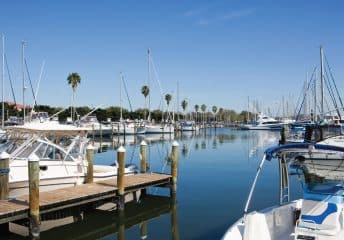How to Read a Fish Finder
Last Updated on September 29, 2023 by Boatsetter Team
If you rent a fishing boat, there’s a good chance it will have a fish finder, and learning how to use it will almost certainly boost your success rate. Fish finders let you peer down through the depths and see if that hotspot is loaded up with fins and tails or if it’s barren. But before we get to reading the fish finder’s LCD screen, here’s a simple explanation of how a fish finder works.
Post summary:
- How fish finders work
- How to use a fish finder
- How to read a fish finder screen
Find the best fishing boat rentals near you
How Fish Finders Work
Think of your fish finder and its “transducer,” the part of the system located on the bottom of the boat, as a loudspeaker and a microphone. The loudspeaker shouts out with sound waves that make “pings” that travel down into the depths. When the sound waves strike something like a fish, the bottom, or a wreck lying on the seabed, they bounce back, and the microphone hears it.
The data then travels through the wires connecting the transducer to the fish finder at the helm, and the computerized brain inside the fish finder sorts it out and displays it on the LCD screen as open water, the bottom, and the fish in between.
Today’s fish finders have become so good at shouting, listening, then interpreting the results that they can use different colors to display the density of the targets they hit, automatically indicate the bottom composition, separate fish mere inches off the bottom from the bottom itself, and illustrate each different fish in a massive school.

How to Use a Fish Finder
Each fish finder operates a bit differently and carries slightly different displays and adjustment features, but most modern units are easy to use and very intuitive because they’re patterned after cell phone interfaces. Whatever the fish finder you may find at the helm, we have some great news for you: most modern units have automated settings, and the vast majority of the time, simply leaving them on the auto settings will provide optimal results.
However, there are still a few settings you should be aware of. Anglers focused on the bottom only may want to zoom in on the lowest levels of the water column and the bottom itself either by adjusting the range or utilizing a “bottom lock” feature (auto-ranges close to the bottom). Zooming in generally provides enhanced detail and makes seeing small fish or separate targets easier. Conversely, if you’re only focused on the upper ranges of the water column, you may want to zoom in on the surface waters.
Sensitivity is another setting you need to know about. Generally speaking, auto-mode will set sensitivity right where it needs to be, but sometimes water conditions or anomalies can fool this feature and leave a screen cluttered up with false positive returns. You may want to turn the sensitivity down a bit in that case. And if the unit isn’t detecting any returns, you may need to boost the sensitivity.
Some units also offer various color palettes and contrast levels. Using these is mostly a matter of personal preference, so feel free to change these and experiment a bit as you figure out what presentation makes it easiest for you to interpret the returns on the screen.
Finally, you may need to change the unit’s frequency at some point. Anglers who remain in relatively shallow water are usually best served by leaving the fish finder on its high-frequency setting, usually 200 to 240 kHz. But when venturing out into the ocean and you’ll be in depths over 500 feet it may be necessary to change to low frequency, usually in the neighborhood of 50 kHz.
Note that many modern “CHIRP” fish finders utilize a band of frequencies simultaneously and may not need as much or any adjustment depending on the specific unit, depth, and conditions.
How to Read a Fish Finder Screen
So, how do you know what you’re looking at on the fish finder’s LCD screen? Luckily, it’s quite intuitive.
The bottom appears as a solid line down low on the screen, and the surface is the solid line at the top. The blips and blobs in between are fish or fish-like items (such as squid) suspended in the water column. Large roundish blobs are usually schools of baitfish, while individual marks are individual fish. Larger single fish often show up as an “arch,” or an upside-down V-shape. At times, you’ll see both — the blob of a baitfish school and the arches of large fish nearby that are hunting them.
Another item you need to be able to interpret on the fish finder screen is a “thermocline.” This is a water barrier between two different bodies of water created by differences in temperature. Modern fish finders have no problem spotting these, and they usually appear as a faint or broken line similar to the bottom line but suspended up above it. Fish will often gather just above or below a thermocline, so understanding how to spot them can be a big help.
Always remember that different water conditions can affect what a fish finder shows you on the screen. In turbid water, it’s not unusual to see a lot of clutter and false returns at or very close to the surface, and the same is sometimes true in very rough conditions.
As a general rule of thumb, most fish finders provide better results when the boat moves at slower speeds. Some (particularly those with transom-mounted transducers) may lose their readings when operating a boat above planning speeds. And when a boat sits still overtop of relatively motionless fish, you may see a straight line across the screen.
Have we covered each and every detail about using a modern fish finder? Of course not. Entire books have been written on the topic, and countless details, settings, and variables can change from brand to brand and model to model. But armed with these basics, you should be able to hop on that boat, hit the water, and, hopefully, catch a few fish.
About Boatsetter
Boatsetter is a unique boat-sharing platform that gives everyone — whether you own a boat or you’re just renting — the chance to experience life on the water. You can list a boat, book a boat, or make money as a captain.
Put your boat to work. Earn an avg. of $20K yearly with Boatsetter

With over three decades of experience in marine journalism, Lenny Rudow has contributed to dozens of boating and fishing publications and websites ranging from BoatU.S. Magazine to BDOutdoors.com. Rudow is currently the Angler in Chief at Rudow’s FishTalk, he is a past president of Boating Writers International (BWI), a graduate of the Westlawn School of Yacht Design, and has won numerous BWI and OWAA writing awards.










